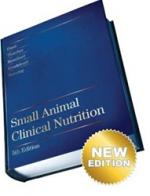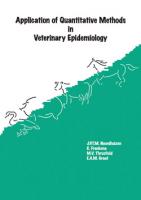Descrição
Key Features
Full color design
New format making the text easier to use
Feeding plans are color coded and easy to find
Coverage of dogs, cats, birds, reptiles and small mammals
Forty percent new information including 6 new chapters and 20 new cases
Over 125 authors and contributors
Most comprehensive, practical small animal nutrition resource available
Organization
The book is organized into 23 sections to facilitate location of information. Section 1 (Principles of Small Animal Clinical Nutrition) begins with an overview of the iterative process of clinical nutrition with emphasis on patient assessment, development of a comprehensive feeding plan and reassessment or monitoring the patient. The other chapters in this section address basic nutrition information. There are four new chapters in this section including:
Evidence-Based Clinical Nutrition
Health Literacy and Client Compliance
Nutrigenomics and Nutrigenetics: Nutritional Genomics in Health and Disease
Antioxidants
Section 2 (Pet Foods) covers a wide range of topics about commercial and homemade pet foods. This section ends with a unique chapter on pet food safety, which is an important topic in this era of increased concerns and public debate about safety of pet and human foods.
Sections 3 through 5 (Nutritional Management of Healthy Dogs and Cats) provide important information about how to feed dogs and cats with the goals of optimizing wellness and performance. For easier access, these chapters have been updated and subdivided according to lifestage and reproductive activity. Section 4 contains feeding information for working and sporting dogs.
Sections 6 through 21 cover dietary management of patients with clinical disorders. All chapters have been extensively updated and two new chapters and multiple new cases have been added:
Nutritional Management of Osteoarthritis
Cognitive Dysfunction in Dogs
Section 22 (Feeding Small Mammals, Reptiles and Pet Birds) is included in response to numerous requests for practical feeding information for these patients. Birds, rodents, ferrets, rabbits and reptiles were once considered exotic pets but today are common veterinary patients.




